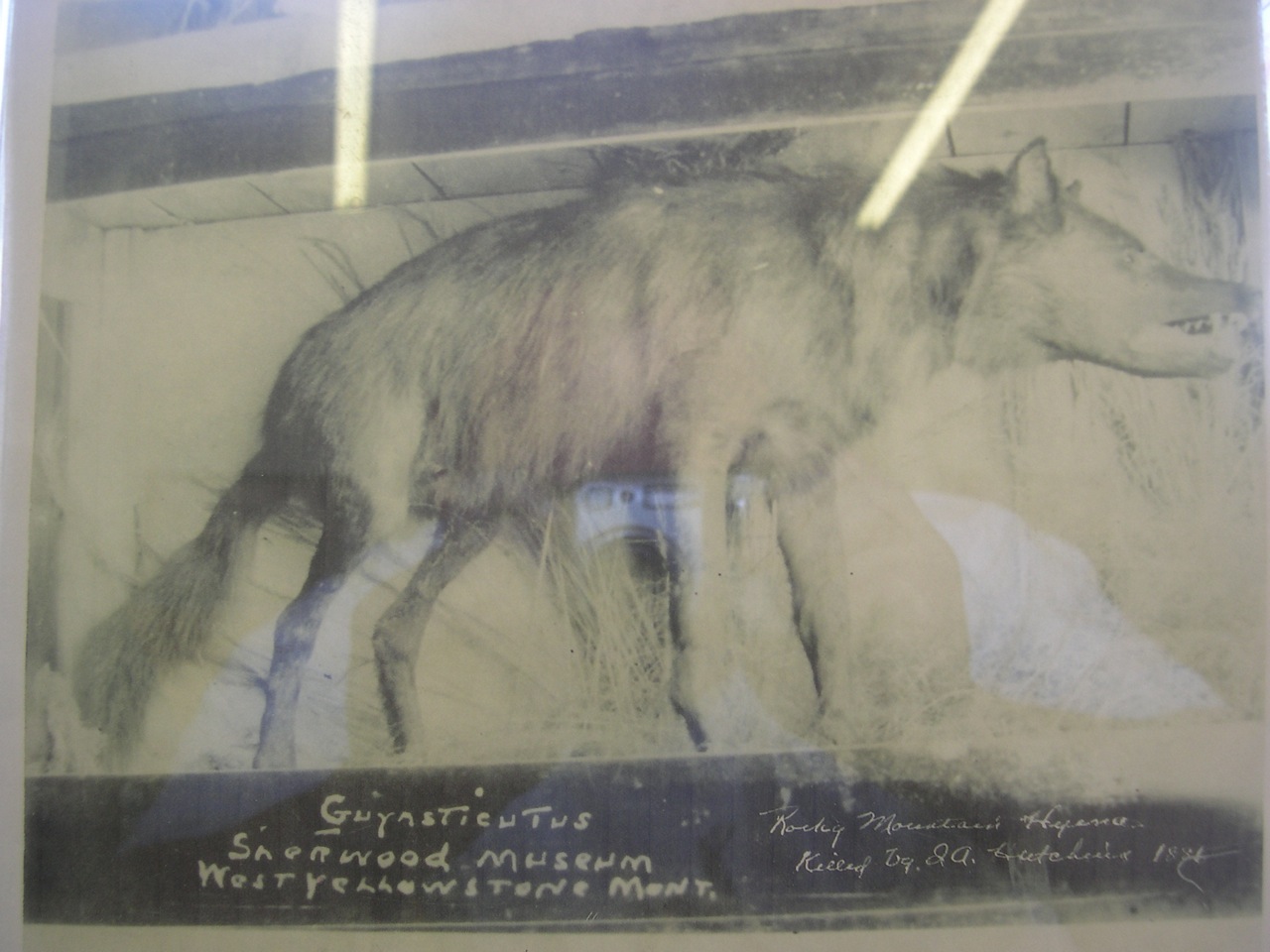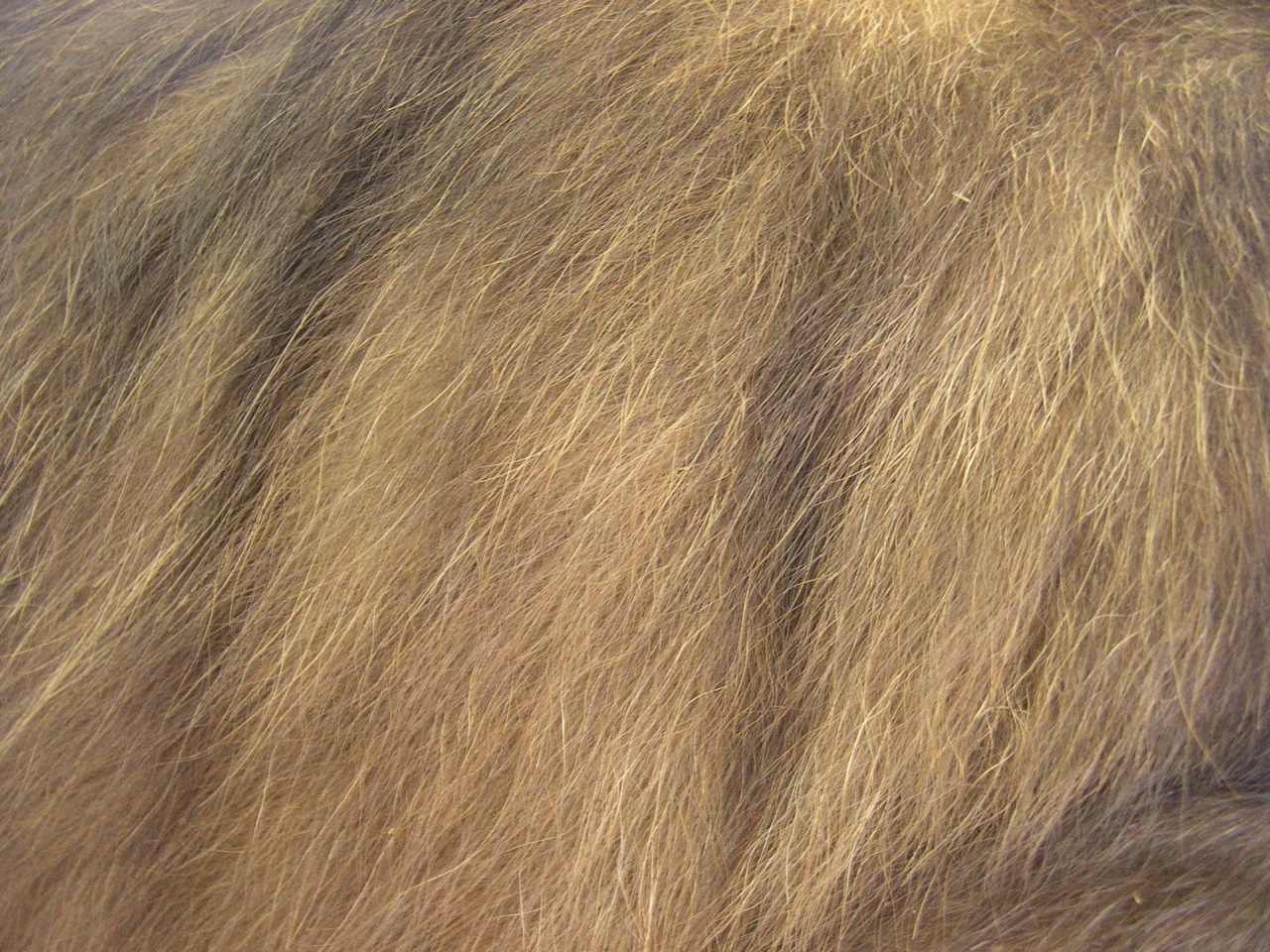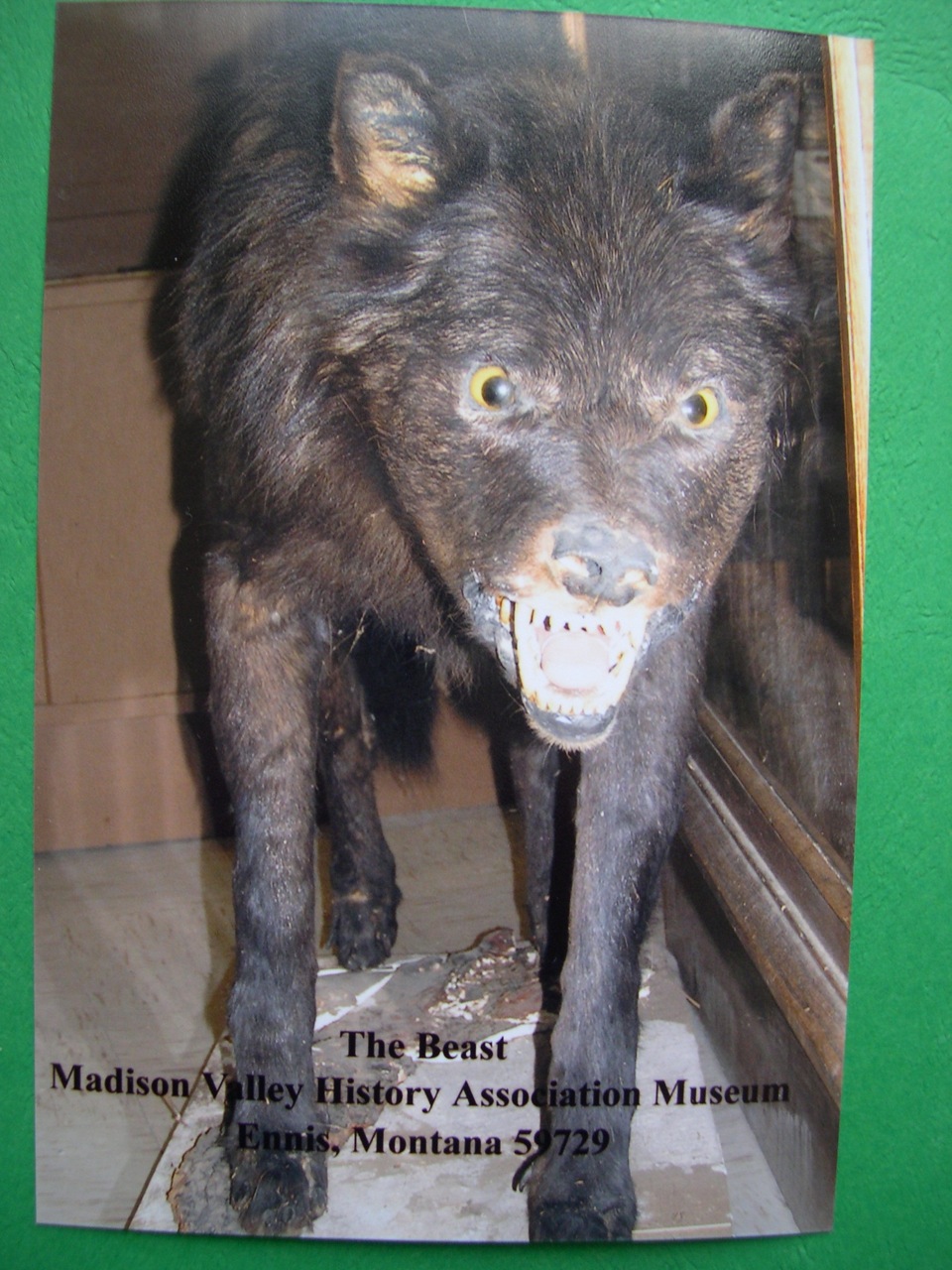Shunka Warak'in: DNA Results?
Posted by: Loren Coleman on May 27th, 2009
Since I’ve been talking a great deal about the Shunka Warak’in lately, one of the most frequent questions that comes up is about the “DNA results.”
For example, here is one inquiry from yesterday (no, I don’t make these up; I don’t have to):
“OK. The mount of the Ringdocus (and I use Ringdocus because I can’t spell Shunka Warak’in) was found and DNA samples taken, but I never found out about the results. Does anyone know what resulted from the testing? I love this cryptid BTW.”
The actual fact is that no one has done any DNA testing on the hair, fur, hide, or alleged teeth of the mount going by the names “Ringdocus,” “Shunka Warak’in,” and “Mystery Beast,” now housed in a museum in Ennis, Montana.

Simply put, the animal is caught in a spider’s web of red tape. The stalling point presently is that the animal is in one museum on exhibition, but the taxidermy mounted animal does not belong to that museum. It has only borrowed from another museum. The current exhibiting museum does not have the legal right to order a DNA test.
Although pressure is being placed on them to obtain DNA testing, privately and confidentially, I’ve been told there seems to be some active lobbying being done to avoid conducting the test.
It seems that some of the powers that be are resisting doing any DNA testing because they wish to retain the mysterious mystic of the taxidermy item.
Indeed, both museums may feel some need to not have a test done due to their sense it would be a less attractive exhibit.
Of course, from both zoological and cryptozoological points of view, now that this item, the classic Ringdocus has been discovered after over a century, I do not feel any of the enigmatic nature of the animal will be lessened if a final scientific verdict is given on what it’s DNA says it is.
Photographs © Lance Foster 2009
Support the International Cryptozoology Museum!
Thank You.
About Loren Coleman
Loren Coleman is one of the world’s leading cryptozoologists, some say “the” leading living cryptozoologist. Certainly, he is acknowledged as the current living American researcher and writer who has most popularized cryptozoology in the late 20th and early 21st centuries.
Starting his fieldwork and investigations in 1960, after traveling and trekking extensively in pursuit of cryptozoological mysteries, Coleman began writing to share his experiences in 1969. An honorary member of Ivan T. Sanderson’s Society for the Investigation of the Unexplained in the 1970s, Coleman has been bestowed with similar honorary memberships of the North Idaho College Cryptozoology Club in 1983, and in subsequent years, that of the British Columbia Scientific Cryptozoology Club, CryptoSafari International, and other international organizations. He was also a Life Member and Benefactor of the International Society of Cryptozoology (now-defunct).
Loren Coleman’s daily blog, as a member of the Cryptomundo Team, served as an ongoing avenue of communication for the ever-growing body of cryptozoo news from 2005 through 2013. He returned as an infrequent contributor beginning Halloween week of 2015.
Coleman is the founder in 2003, and current director of the International Cryptozoology Museum in Portland, Maine.














the likelihood of viable DNA seems to be low, given the method of preservation. as i mentioned before, an x-ray may yield clues that are interpretable by an expert, but open-ended enough to leave spectulation for those that wish to see it. it may be a more palatable first step to the museum. should something unusual be found, they may jump on the DNA test.
Any honest, truth seeking person in cryptozoology wants to get to the TRUTH no matter the result, whether that confirms a cryptid or a known animal. They need to do a DNA test and get to the bottom of this. Anyone not wanting a DNA test in my opinion doesn’t want the true facts to surface. Why? I guess that tells a lot, but for the people who have no time for lies, hoaxes, and mystery, and only want the truth would see absolutely no rational decision not to do the test.
Unfortunately most museums and places that show off the weird and so far unexplained make their money that way. You kill the mystery and there is a good chance they lose a lot of money. They are not usually run by “true cryptozology” seekers.
One thing about hair, it provides a very good refuge for DNA protecting it from both decay and contamination within the strands. Mitochondrial DNA is favoured, but nuclear DNA is also found. Hair is not usually treated with preservatives is it and if it was any DNA might still be intact because of the natural protection given. Personally i’m rather sceptical of DNA results which deal with cryptids!
I also wonder if there is any connection with the ‘mississippi hyena’ and less likely the ‘maine mutant’. Both on this site.
Greg102 I think you’ll miss all the fun if you want your facts straight ie without any mystery. Bit like a flower in black and white!
.
The Shunka Wara’kin is very obviously a canid; from the looks of it I’d guess that it’s most likely a wolf-coyote hybrid. Possibly it had some puppyhood disease, malnutrition or trauma which was responsible for the other physical oddities. Most of those oddities might very well have been due to poor (or possibly very deliberate and deforming) taxidermy. Then, too, it might simply have been an unfortunate, misshapen sport. A lot of people seem to forget just how different some members of any species might be from the norm for that species (think elephant man). In fact, my wife and I once had an old cat which had a facial profile which was almost identical to the slope of the Shunka Warak’in’s face; this was the result of the man (?) who owned her before she came to live with us using her as a target for thrown (empty) quart beer bottles.
There isn’t necessarily anything cryptic about some deformed individuals; visit a Veterans’ hospital if you think different. Trauma can explain an awful lot, especially if it is years old and mostly recovered from.
There is also the idea that DNA testing can explain anything. It can’t. There has to be an accepted model for DNA results to be compared against. It isn’t like a pregnancy test where blue means safe and pink means pregnant, no blue is wolf, pink is dog, purple is coyote, green is fox, brown is dire wolf.
The best that DNA tests on the Shunka Warak’in would show would be wolf, coyote, dog, some mixture of the three, or unknown canine. Until someone has a clue about what the Shunka Warak’in might be (other than a known canine of some sort) and there is a standard model of this creature to compare it to, DNA testing would be virtually useless.
And people always wonder why cryptozoology has such a hard time coming up with anything…between actually finding something and then having to wade through politics, red tape, and just plain old fashioned pride, it’s a wonder anything ever gets discovered.
Since I’m on a tirade, I may as well add on to it…I watched the show entitled “Link” the other night about the primate skeleton. What bothered me the most was the first few minutes where the main guy (I forget his name, but then I am like that with names if I don’t say it at least five or six times…), went to a trade show–he talked about how real fossil finds are often snatched up by private collectors and never see the light of day…I know it happens and I understand the black market, but it ticks me because in all likelihood there could be some solid evidence for all kinds of things sitting in people’s private vaults and homes and we’ll never see it…
like the supposed 30’s footage of Nessie that has apparently been partially shown, and then locked in a vault by the owners (who I understand have died).
Alright, I’m done venting, but I’m still ticked by all the of the “red tape” that goes on in this world…go get ’em Loren!
Seems to have the certain something you see in the Tasmanian Devil.
The ringdocus is clearly just a black wolf, and looks odd for two reasons: it was poorly mounted in the first place, and it has deteriorated badly since then.
It is no longer owned by a museum different from the one in which it is displayed. The Idaho Museum of Natural History deaccessioned the mount and conveyed ownership to the person who had previously borrowed it. So the museum in Enis is the only one preventing a DNA test from being done, if anyone at all is preventing it.
For anyone claiming to be interested in pursuing cryptozoology from a scientific standpoint, advocating against doing DNA testing in order to preserve some sort of “mystery” is a clear sign of a P. T. Barnum approach to the subject, not a scientific one. My good friend J. Richard Greenwell would have been appalled!
It’s a fake! No, I don’t mean the creature, I think there might be some truth to it (personally I think it’s chasmaporthetes[?]), and I think the mount in the black and white is genuine, I just don’t believe the recently rediscovered mount is it. Ever since its discovery, I’ve looked at both pictures and couldn’t shake the feeling that there were some differences between them. In the original, it seemed bigger, with the neck and head slightly elevated, not leaning downward. The back in the colored photos is more arched, and not level towards the head and slanted towards the rear. The face in the original seems to have a lighter touch to it, with a mouth opened wider and a jaw that is at an odd angle, not at all like a wolf. Then there’s the googily eyes in the colored photos; really, cheap, plastic eyes? But, I’d say the tell-tale sign it’s a fake is the “red tape” that sprung up all of a sudden; no one wants a DNA test done because they know it’s authenticity is dubious. Seriously, I don’t think museum curators are going to make that big of a fuss over obtaining DNA results from the hair of an animal that someone might assume was a wolf just by looking at it; you make them sound like a bunch of carnies, Coleman. If anything, I think they would want some kind of identification, so as they’d know what they’re getting.
The real mount, if it isn’t destroyed, is probably lost somewhere or stowed away in the back of some warehouse (ala, Indiana Jones [no pun]), and the one they have now is most likely a forgery that was based off of the original using a wolf’s skin that was dyed over to make it look convincing.
Ridicule me for my theory or the fact that I put so much into this, but personally I’ve never appreciated being taken for a ride by anyone who would treat people like me as children for believing in such things, especially when some of us really have seen things that we can’t explain (for me it was a black panther) and are genuinely looking for answers, so it would be nice to know where to go. It’s like a recent news program I saw where the editor Skeptic Magazine revealed to us Roger Patterson’s “partner”, a New Jersey con man/magician that claimed to have made the gorilla suit for the famous film. Or, like that episode of Monster Quest that investigated Mac Farlane’s bear, who’s remains are still hidden from the viewing public in the Smithsonian, so they allow one person to take a look at it, without the camera crew, surprisingly, and then he tells us that it was just an ordinary, female grizzly and that there was nothing extraordinary about it. If that’s the case, then what makes this animal so special that not even a cameraman is allowed anywhere near it; what is so special about a female grizzly bear or are they trying to figure out why it’s fur is yellow, which by the way brings back the previous statement that there was nothing extraordinary about it in the first place, so it’s coat wouldn’t be out of the ordinary for grizzlies, then (and, I thought they said it was a polar bear hybrid or something; so which is it?), so why treat it like a VIP?
What bothers me, however is that no one, not even you Coleman, questions any of this; this mount is so obviously a rip-off!
I am curious about this animal like everyone else is. To me , it looks like a hairy Thylacine, (Tasmanian Tiger). Just look at the wikipedia pics of the last pics of a living Thylacine and imagine it with longer hair or look at the Ringdocus with super short hair. A Thylacine has only 4 foot pads on it’s rear feet but 5 like a regular dog on it’s front paws.
PLUS… the Thylacine is a marsupial and thus has a tiny pouch on its underside… (if it is a female). If it is a male, then the biggest tale tale sign of it’s likeliness in being a Thylacine is the foot pads that are different then a wolf or coyote.
My other idea is that it might have been the last Dire Wolf that somehow was in a small population that survived from the paleolithic era and like I said, it might have been the last one of that group that might have lived in the deep wilderness and undiscovered. Sounds nuts… remember the re-discovery of the Coelacanth.
I am curious why a DNA test hasn’t been done???. it is a 100 year old specimen. Yes it has been subjected to a taxidermic process and mounted but the marrow in its bones and the teeth should readily provide viable DNA. DNA from much older animals have been retrieved successfully.
These are just my ideas and thoughts on this animal of unknown origin. Would a signed petition or some other legal task be taken to get a DNA test done. How can the museum that has this animals remains NOT want the truth to be known. It sure peaks my curiosity.
I hope before another hundred years passes, that it will finally get a proper DNA testing.
Thanks for letting me share.
There is very little mystery as to what the Ringdocus is. Any student of natural history could commit a little time to research and draw the very simple and rather obvious conclusion that this animal is none other than a North American Hyena. It has been so long since there have been Hyena seen outside of Africa that many will scoff but the Hyena have had ranges all the way into Asia and at least one species has been in North America since the late Miocene (maybe a little later but generally). I predict that should DNA ever be taken from this animal and analyzed with sufficient means the classification will result as follows: Kingdom: Animalia, Phylum: Chordata, Class: Mammalia, Order: Carnivora, Suborder: Feliformia, Family: Hyaeniae, Genuis: Hyaena, Species: H. Americus (or should the reseracher feel generous… Warrenus?) . These animals are very likely on the verge of extinction now and efforts should be made to collect living animals and study them and perhaps preserve large amounts of DNA.
[…] https://cryptomundo.com//cryptozoo-news/dna-sw/ http://lyleblackburn.com/blog/mystery-of-shunka-warakin/ http://www.unknownexplorers.com/shunkawarakin.php […]